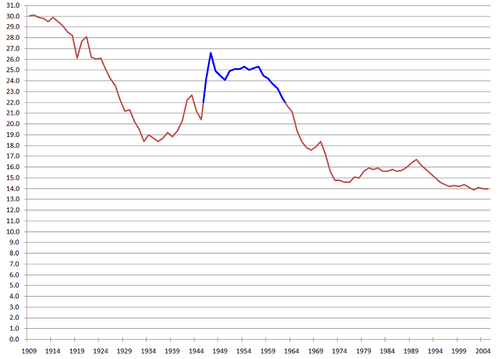 Contrary to popular startup myths and misunderstanding, tech founders aren’t mainly younger than 30. They are generally well educated, not dropouts. They tend to start up where they are, instead of moving to Silicon Valley or other tech hubs.
Contrary to popular startup myths and misunderstanding, tech founders aren’t mainly younger than 30. They are generally well educated, not dropouts. They tend to start up where they are, instead of moving to Silicon Valley or other tech hubs.
Here’s a summary of data published by the Kauffman Foundation:
We observed that, like immigrant tech founders, U.S.-born engineering and technology company founders tend to be well-educated. There are, however, significant differences in the types of degrees these entrepreneurs obtain and the time they take to start a company after they graduate. They also tend to be more mobile and are much older than is commonly believed.
Founders are in their late 30s, 40s, and older
-
The average and median age of U.S.-born tech founders was thirty-nine when they started their companies. Twice as many were older than fifty as were younger than twenty-five.
90+% have college degrees
-
The vast majority (92 percent) of U.S.-born tech founders held bachelor’s degrees. Additionally, 31 percent held master’s degrees, and 10 percent had completed PhDs. Nearly half of all these degrees were in science-, technology-, engineering-, and mathematics- (STEM) related disciplines. Onethird were in business, accounting, and finance.
-
U.S.-born tech founders holding MBA degrees established companies more quickly (in thirteen years) than others. Those with PhDs typically waited twenty-one years to become tech entrepreneurs, and other master’s degree holders took less time to start companies than did those with bachelor’s degrees (14.7 years and 16.7 years respectively).
-
U.S.-born tech founders holding computer science and information technology degrees founded companies sooner after graduating than engineering degree holders (14.3 years vs. 17.6 years). Applied science majors took the longest (twenty years) to create their startups.
Top-rank universities are over represented
-
These tech founders graduate from a wide assortment of schools. The 628 U.S.-born tech founders providing information on their terminal (highest) degree, received their education from 287 unique universities. But degrees from top-ranked universities are over-represented in the ranks of U.S.-born tech founders. Ivy-League universities awarded 8 percent of the terminal degrees to U.S.-born tech founders in our sample.
-
The top ten universities from which U.S.-born tech founders received their highest degrees in our sample are Harvard, MIT, Pennsylvania State University, Stanford, University of California- Berkeley, University of Missouri, University of Pennsylvania, University of Southern California, University of Texas, and University of Virginia. U.S.-born tech founders with Ivy-League degrees tend to establish startups that produce higher revenue and employ more workers than the average. Startups founded by those with only high school education significantly underperform all others.
They start closer to home
-
Nearly half (45 percent) of the startups were established in the same state where U.S.-born tech founders received their education. Of the U.S.-born tech founders in our sample receiving degrees from California, 69 percent later created a startup in the state; Michigan, 58 percent; Texas, 53 percent; and Ohio, 52 percent. In contrast, Maryland retained only 15 percent; Indiana, 18 percent; and New York, 21 percent.





You must be logged in to post a comment.